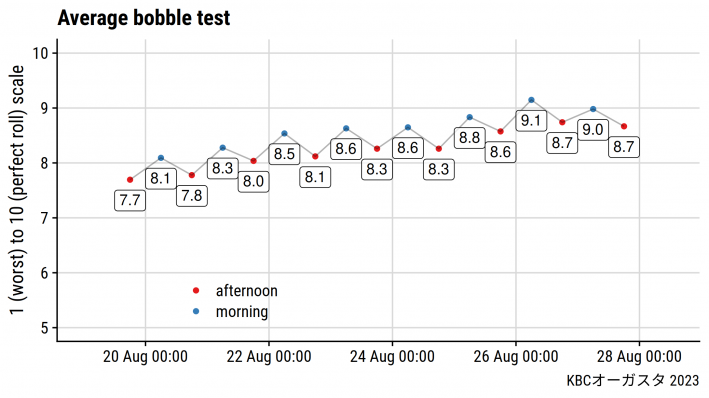One additional chatter or snaking event in every third ball roll
I’ve measured more deviations in ball roll (bobble, chatter, and snaking) on golf course putting greens at the end of a day’s play, compared with measurements of ball roll deviation made prior to any play. That is, greens aren’t as smooth at the end of the day as they are at the start.
That’s no surprise, because pitch marks, foot traffic, and grass growth through the day are all expected to decrease the smoothness of the surface. I’ve been interested to know the magnitude of the drop in smoothness and trueness of greens.
This is something I wrote about recently in a PACE Turf member update, Smoothness and trueness of putting greens before and after play. I’d like to remind you that I write there every week, and you can see all those updates, plus the weather alerts, climate appraisals, and have access to all the PACE Insights and References, with a USD $275 annual subscription.
From the PACE update:
- During the 2023 KBC Augusta golf tournament at Keya GC in Japan, I measured the bobble test each morning at the same time I measured the green speed before play. I then repeated this measurement at the end of each day’s play.
- The average drop from morning to afternoon bobble test scores across the eight days with complete measurements is 0.3. That’s equivalent to about one chatter or snaking event in every third ball roll.
- I have also measured this on bentgrass greens during the 2022 Catalunya Championship on the European Tour at Camiral Resort, and the morning to afternoon drop was about 0.8. For those bentgrass greens, the decrease in bobble test score translates to about one more chatter or snaking event for each ball roll.

